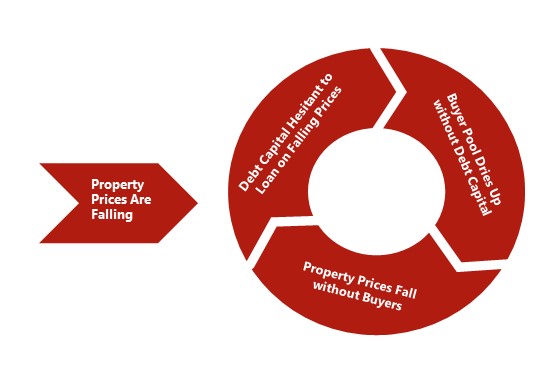 Vaccine rollouts, an increase in local and regional non-air travel trends and higher transaction volumes are all positive news supporting an elevated degree of confidence for a market rebound. Multiple announcements made by large investment funds committing to substantial capital injections into the hospitality lending space will also provide a boost.
Vaccine rollouts, an increase in local and regional non-air travel trends and higher transaction volumes are all positive news supporting an elevated degree of confidence for a market rebound. Multiple announcements made by large investment funds committing to substantial capital injections into the hospitality lending space will also provide a boost.Despite all this, for most, with the exception for the strong, well-capitalized borrower, access to debt capital is virtually unattainable. This article aims at highlighting the relationship between the major trends and providing some insights into reasons why we are stuck in the current lending status quo. Furthermore, it offers an argument of what may help hotel lending get back into gear and become available again to the general masses.
Since the onset of the COVID-19 pandemic in March 2020, hotel prices have fallen. Initially, it was caused by the unprecedented drop in revenues, and later further exacerbated by the uncertainly in the time before business would recover to pre-pandemic levels. In some major metropolitan markets, the increased competition from new room supply has also been a factor.
In an environment of falling prices (relative to 2019 pre-pandemic levels), three variables play an equally important role in influencing new lending originations: transaction volume (buyer pool), asset valuation (price), and debt capital.

Source: Jim Costello/Real Capital Analytics
The relationship is circular, and these three variables are positively correlated; that is, the larger the number of transactions, the higher support for asset values, and the more willing lenders are to provide debt capital.
Immediately following the nationwide lockdown last March, virtually all transactions ground to a halt. Loan commitments were pulled back, and sales contracts were canceled. The unprecedented events and uncertainty surrounding reopening dragged on for most of 2020. Asset valuation became challenging, as the path to recovery back to normal was anyone’s guess. Setting aside the actual and potential problems that lenders were facing with existing loans in their balance sheet, underwriting for new loan origination became very difficult.
As the circular relationship continues, the lack of financing made it difficult for most buyers to make an offer. Even if they could, steep discounts were necessary to solve for the required rate of return. Sellers were unwilling to accept the heavily discounted offer price, hanging on to the higher perceived asset values in the hope of speedy recovery. The low volume of closed transactions prompted by the small buyer pool made asset valuations more challenging without using more than the usual number of assumptions. The lower transaction volume and these discounted prices have made lenders feel uneasy to make credit decisions and extend new loan commitments. The three variables came to a full circle and unfortunately spiraled down.
However, recent positive developments have helped to slowdown this downward spiral. Thus, what is needed to reverse the course of this circular motion?
Although all three variables are equally important in ensuring healthy and robust debt capital markets, the source of capital certainly plays a more dominant role in helping kick things into gear. When we observe and learn from other property types, namely multi-family residential, the swift decision by the Fed to provide guarantees through agency loans has helped keep the multi-family sector relatively unscathed throughout the pandemic. Debt capital through agency and balance-sheet lenders is readily available, transaction volume remains high, and asset valuation is well supported.
In the hotel space, government-backed loans are available through the SBA and USDA programs. While helpful, due to their size and location restrictions, these programs are only applicable to a relatively small segment of the market, namely smaller hotels and those located in rural areas. In recent months, the return of investor-driven lenders and debt funds into the hotel lending space was refreshing. However, they too have their limitations. These funds tend to focus on high-quality assets backed by strong sponsorships and primarily in selective primary and secondary markets. Now, we just need other debt capital sources to fill the “middle gap” and complete the full lending spectrum.
This article was previously published on Hotels Magazine.
About Emil Iskandar
Emil Iskandar, Senior Vice President of HVS Capital Markets, is responsible for the origination, structuring, and placement of debt and equity capital solutions. Prior to joining HVS, Emil was a Director at Marcus & Millichap, where he was responsible for securing debt and equity financing for full-, select-, and limited-service hotels, as well as resort hotels and golf courses nationwide. Earlier, he was a Vice President at HVS Capital Corp. He began his real estate career with Jones Lang Wootton Asia-Pacific. Throughout his career, Emil has worked with investors ranging from large multinational institutions to family offices. He has completed origination, structuring, and placement of debt and equity capital transactions across all facets of commercial, residential, lodging, and leisure properties. Contact Emil at 1-720-231-3927 or [email protected].

Excellent article Emil. You have very well explained all the independent factors that affect hotel asset values.
Very nice explanation, Emil. Thank you.